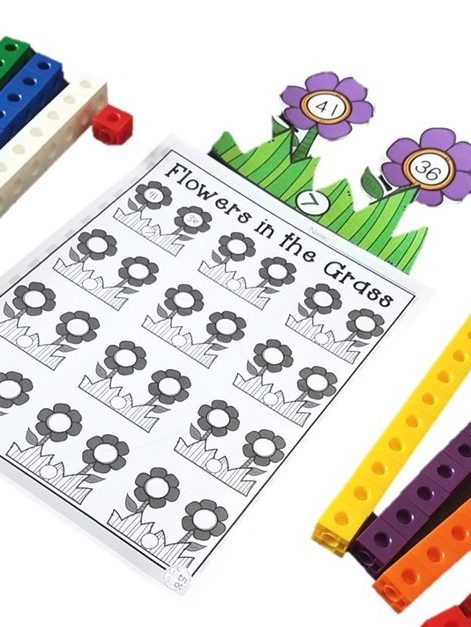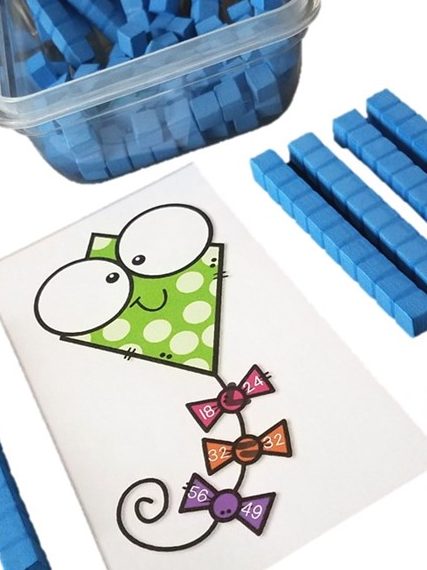This post contains affiliate links. This means that when you make a purchase, at no additional cost to you, I will earn a small commission.
This may be the most controversial post I have written since “Key Words are NOT the Key To Word Problems” but here we go.
Should we use the alligator number comparison strategy to support our students in comparing numbers? My answer is a resounding yes… and no. I take the position that it’s a great strategy and that we should use it and then promptly lose it!

Before we dive into the strategy, let’s take a quick look at the standards. Grounding ourselves in the standards can be helpful in terms of determining whether a strategy has merit in our classrooms.
Number Comparison Standards
1st Grade Number Comparison Standard: CCSS.MATH.CONTENT.1.NBT.B.3 Compare two two-digit numbers based on meanings of the tens and ones digits, recording the results of comparisons with the symbols >, =, and <.
2nd Grade Number Comparison Standard: CCSS.MATH.CONTENT.2.NBT.A.4 Compare two three-digit numbers based on meanings of the hundreds, tens, and ones digits, using >, =, and < symbols to record the results of comparisons.
3rd Grade Number Comparison Standard: CCSS.MATH.CONTENT.3.NF.A.3.D Compare two fractions with the same numerator or the same denominator by reasoning about their size. Recognize that comparisons are valid only when the two fractions refer to the same whole. Record the results of comparisons with the symbols >, =, or <, and justify the conclusions, e.g., by using a visual fraction model.
In each of these standards notice that students are being asked to compare based on place value concepts. In first grade, this means comparing based on the tens and ones digits. In 2nd grade, this extends to the hundreds place. In third grade students are comparing fractions by reasoning about their size.
The first piece of your comparison instruction has nothing at all to do with symbols at all. The first priority in your place value instruction is to help your students to understand place value and to reason about numbers and their size.
When Do Comparison Symbols Come Into Play?
Comparison symbols are nothing more than a way to note a comparison. Like the letter P makes the /p/ sound, <, > and = are all symbols that communicate information about numbers.
And, like some of our learners have difficulty recognizing and remembering the difference between p and q or b and d, some of our learners will need support in remembering the difference between < and > as well!
We can certainly use a tool (like the alligator strategy!) to help our students remember the meaning of these symbols but it is critical that we do not allow instruction to stall out at the use of that tool!
Moving back to the letter recognition example, I have seen many teachers use the “bed” strategy to remember the letters b and d. When you write the word “bed” it *looks* like a bed with a headboard and a footboard. If you were to write the word bed with letter reversals on b and d it would look like “deb” and no longer looks like a bed. Notice, there are no elementary teachers who stop their instruction here! It would be unreasonable and inefficient to ask a student to write “bed” each time the encounter a “b” or a “d” in order to determine which letter they are working with. It’s a tool that is used, and then moved aside once a student is able to remember that symbol!
What Can The Alligator Number Comparison Strategy Look Like In Practice?
To begin the instructional activity, ask your students to each build two numbers, for example, 32 and 56, using linking cubes. Ask your students to tell you what they notice about the two numbers. If any students compare the numbers but use words other than “greater than” or “less than” simply praise them for what they have noticed and provide them with the correct vocabulary. Ask your students to repeat the phrases with the correct vocabulary many times. “56 is greater than 32” “32 is less than 56”.
Ask your students to turn to a partner and use the words “greater than” to describe the two numbers. Ask your students to then use the words “less than” to compare the two numbers. Give them many (almost too many!) chances to use these words correctly.
Ask your students to hold out their arms like a gigantic alligator mouth. Ask them to use their giant mouth to EAT the greater number. You want to be silly with this activity and really create a visual image that will stick with your students. On YOUR TEACHER WHITEBOARD ONLY draw a greater than sign with teeth that compares 56 > 32. Show your students that you could draw a picture that eats the greater number just like they did with their arms. Finally, erase the teeth and tell them that there are no teeth in math but there are math symbols that mean greater than and less than. Show them that you have drawn the greater than symbol.
Some of your students have likely built the 56 to the right and some to the left of the 32. This is perfect! Ask them to use a whiteboard (or even use dry erase markers right on the table if you are brave!) to draw a symbol that compares their two numbers.
Take turns allowing your students to read their comparisons aloud noting that some of them have the 56 first and are saying “greater than” and some have the 32 first and are saying “less than”. This is vocabulary and a convention and it takes a bit of practice so repeat the activity and encourage as much dialogue as possible!
In using this instructional strategy you are offering support to your students in 3 ways:
- You are providing a groupable model (linking cubes) to construct and compare using an understanding of tens and ones.
- You are offering your students a tool to remember the less than and greater than symbols.
- You are providing an abundance of practice using comparison language in comparing two numbers using the words less than and greater than.









